Gandia, Spain – a seaside resort in the southern part of the Valencia region. The charm of the town is given by the port and picturesque mountains surrounding the settlement on all sides.
General information
Gandia is a seaside resort in the province of Valencia. The city has a population of just over 70,000 and a total area of 60.8 km².
The city cannot be called a major tourist center of the region – there are no large number of attractions and night entertainment. Nevertheless, every summer several thousand Europeans are eager to come here to relax on the seashore surrounded by beautiful nature.
Many people think that the city of Gandia was named after the famous Indian politician Mahatma Gandhi, but this is not true. The name comes from the combination of several Spanish words. Gandia is a typical Spanish small resort with a well-preserved Old Town and a few interesting places.
Attractions and entertainment
Gandia is definitely not the best place for sightseeing, but if you want to combine beach vacations with some educational walks, this is the place for you.
Palace of the Borgia Dukes
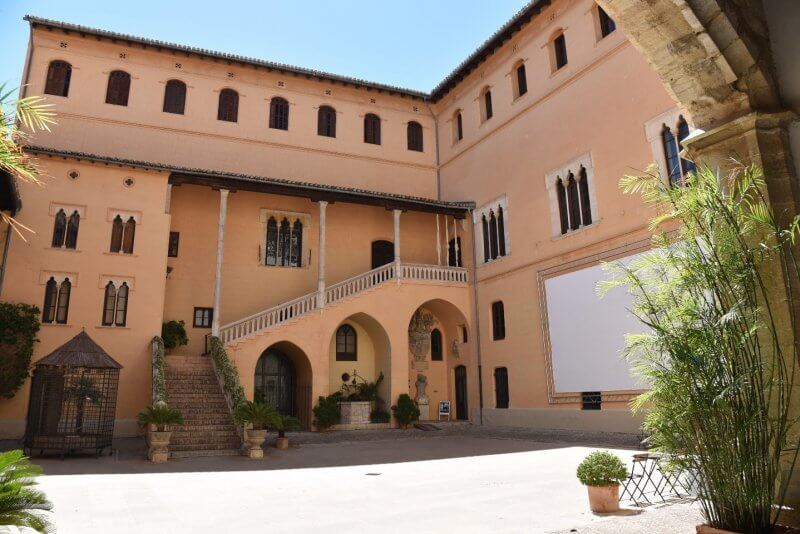
The most important and famous attraction in Gandia is the Borgia Palace. This is the ancestral home of 11 generations of the Borgia family. Interestingly, the history of the palace began not in 1485, when the first Borgias arrived, but much earlier, in the early 14th century, when it was built by the Aragonese kings.
The exterior of the landmark is not very beautiful or royal – it is a simple three-storey sandstone house. However, if you enter the courtyard, you can already see some features of a rich house from the 15th and 16th centuries: an elegant stone well in the center of the courtyard, a large marble and sandstone grand staircase, and a small garden.
However, the interior of the attraction leaves no doubt that a wealthy noble family lived here:
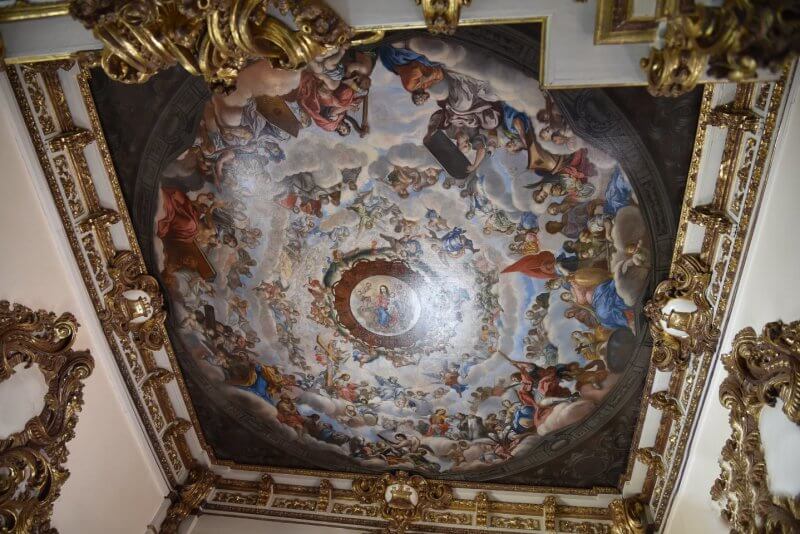
- The Coronation Hall. This is the main room in the palace, where all future rulers of the Borgia family were crowned. The room has been renovated several times, and it is interesting to see the mix of styles: the walls are in an exotic Moroccan style, combined with a neo-Gothic chapel and Renaissance-era furniture. In the center of the room, there is a Sarmatian portrait of Francis de Borgia, the founder of the dynasty.
- The study of St. Francis. For a long time it was a rather ascetic room, however, in the middle of the 16th century, the tenth Duke of Borgia decided to completely redesign the room, and the main emphasis is on the ceiling – now here you can see the incredible beauty of freedom, which are similar to the church.
- The chapel. Tourists are not allowed to enter this part of the attraction, as the interior is very expensive: hundreds of precious stones on the walls and ceiling, portraits of all the Borgia family members, and exquisite 15th-century bas-reliefs (museum staff refer to it as a “precious box”). However, visitors can admire its beauty through the glass.
- The Duchess’s Room. This is a rather modest and small room, where almost all of the future Borgia rulers were born. It is based on the Greek style.
- The Orlov Salon is the only baroque-style room, known for its ornate ceiling and expensive furniture.
- The Golden Gallery is the most famous hall in the palace, and all the objects in it are made of gold. It is not a single room, but a long corridor that connects the Sardinia Salon, the Green Hall, the Ornamented Hall, and the Holy Family Salon.
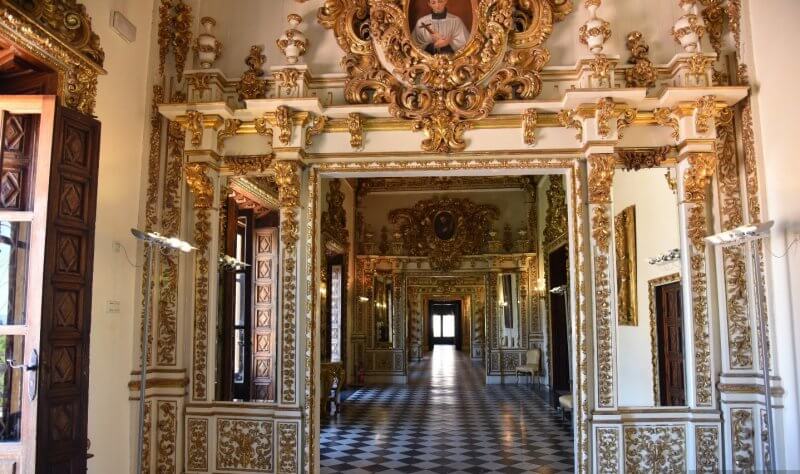
Practical information:
- Address: Carrer del Duc Alfons el Vell, 1, 46701 Gandia, Valencia, Spain.
- Working hours: 10.00-13.30, 16.00-19.00.
- Official website: www.palauducal.com
Faller Museum (Museu Faller of Gandia)
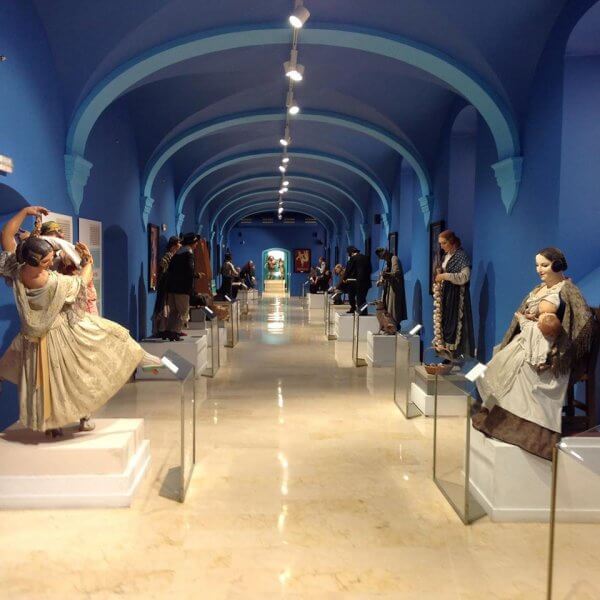
All tourists agree that Museu Faller of Gandia is the most interesting museum in Gandia. Here you can see hundreds of original sculptures and dolls depicting famous people.
However, it’s not that simple – these dolls are not just beautiful exhibits, but also important elements of the masquerade processions that take place regularly in Gandia. Tourists will learn about the people who create these unique sculptures, their purpose in the city’s celebrations, and the significance of their burning.
- Address: Carrer Sant Martí de Porres, 29, 46702 Gandia, Valencia, Spain.
- Working hours: 10.00-13.00, 17.00-19.00.
- Price: 3.5 euros.
Prado Square
Prado is the central square of Gandia, where a small farmer’s market is held every weekend, and there are also several family-run cafes. Near the square, you can find a variety of expensive boutiques and well-maintained courtyards.
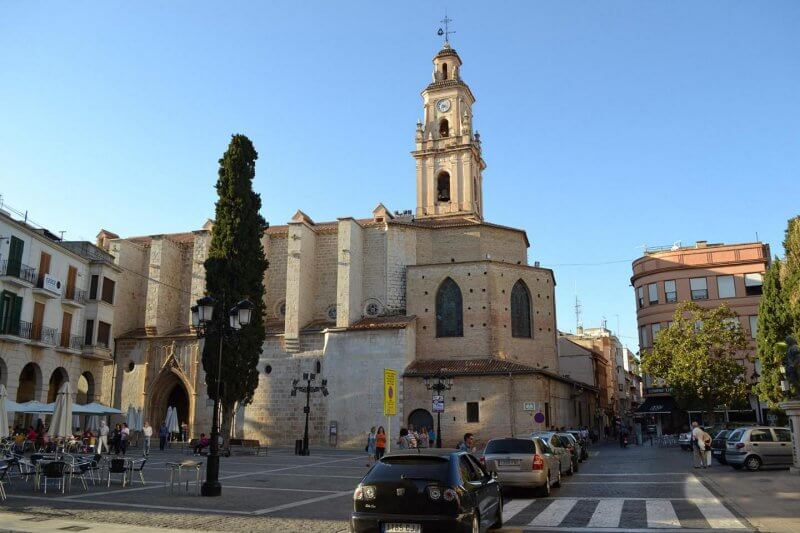
There are always a lot of tourists in this part of Gandia, but there are almost no interesting sights.
Port and embankment
Gandia’s promenade is considered one of the widest and most beautiful in Valencia. Here you can walk, sit in one of the cafes, look into a small boutique, and also admire the bright flowers on the flowerbeds. On the promenade there are many benches and sunbeds for relaxation, there are also exercise equipment and playgrounds for children.
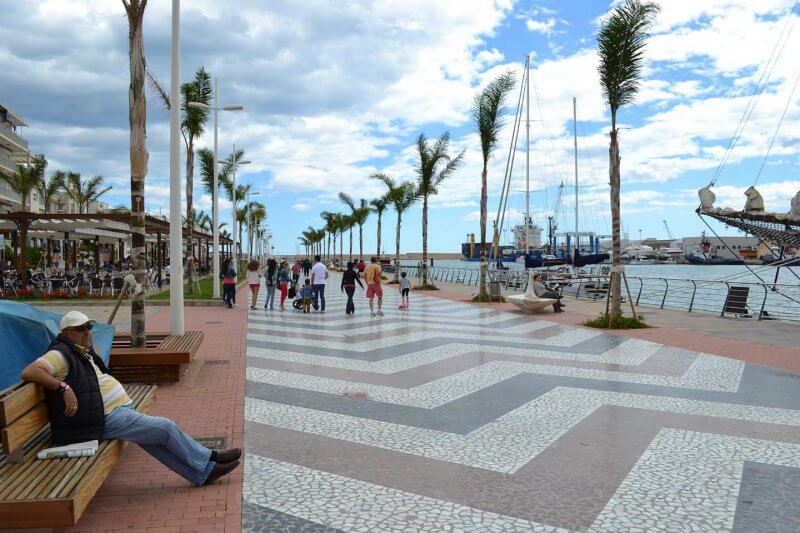
On the left side of the attraction, there is a port where you can see large ships, as well as many white yachts and sailboats.
Beaches of Gandia
There are about five beaches in Gandia, but their boundaries are not clearly defined, so there are two main beaches: Gandia Playa and Nord Playa.
Gandia Playa
This is the central beach, located in the heart of the town. There are many tourists here, but there is enough space for everyone. The approximate length of the beach is about 3 km, and the width is at least 130 m.
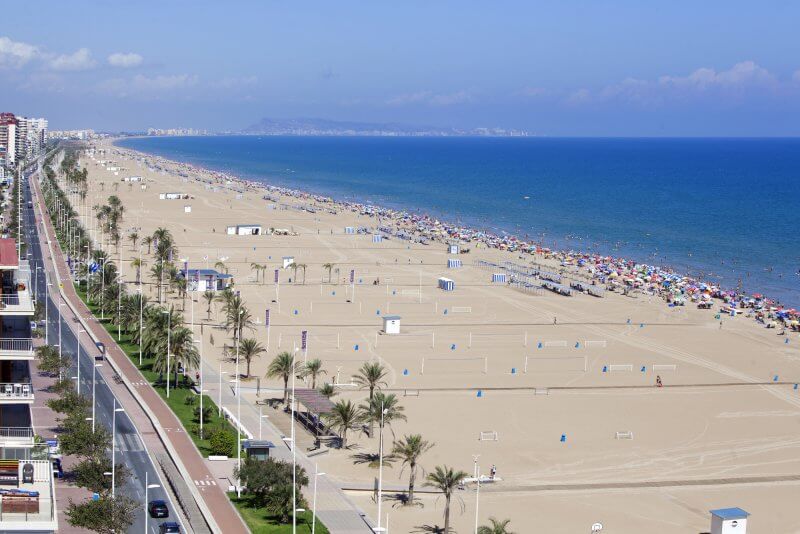
The sand at Gandia Playa is fine and golden, and the entrance to the water is smooth. There are no rocks or cliffs in this part of the Spanish coast. The water is very clean, and during calm weather, it is completely transparent. There are no problems with infrastructure, as there are cafes, sun loungers, showers, and toilets. A picturesque promenade runs along the beach.
Please note that there are no water activities at Gandia Playa, as it is designed for a relaxing vacation.
Nord Playa
This beach is located in the northern part of the resort. The water in the sea, as on the previous beach, is very clean and transparent. Nord Playa is rarely littered with garbage or sharp rocks. The water is shallow, but the sea is deeper in this part of the coast than near Gandia Playa. High waves are extremely rare. The beach is sandy.
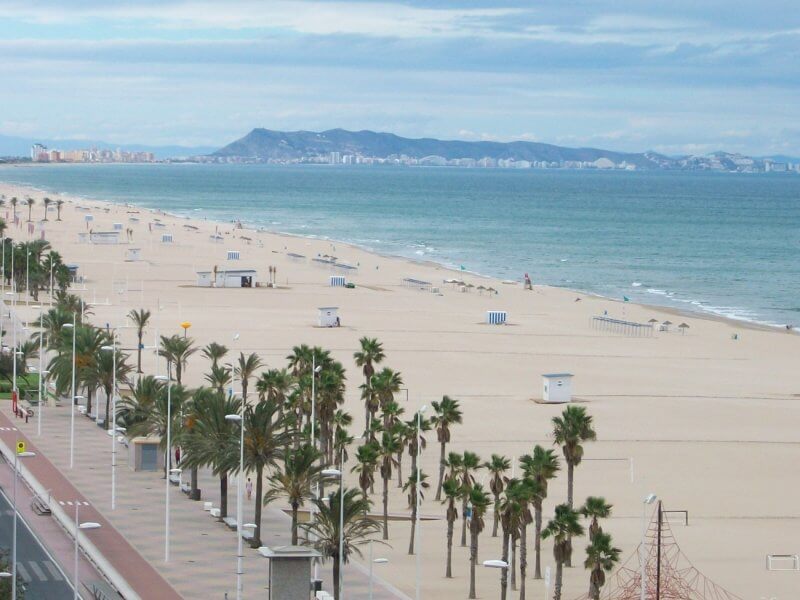
There are many showers and toilets on the beach, and 2 cafes are open. In the summer, there are exercise bikes and volleyball courts on the promenade.
Accommodation in Gandia
Gandia is very popular among tourists during the summer season, so it is worth booking a hotel in advance. There are just over 40 hotels in the resort, and most of the rooms are booked 2-3 months in advance.
Gandia has the most 3-star hotels. The average price for a room in the summer season for two people ranges from 50 to 80 euros. This price includes a spacious room with modern renovations and a balcony. Many hotels offer guests free breakfast and access to a fitness center, if available.
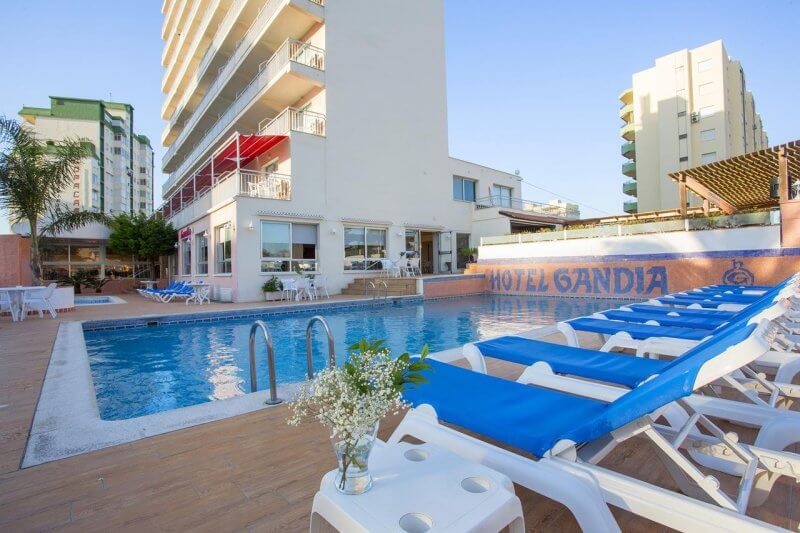
A 4-star hotel will cost between 100 and 160 euros per night. This includes a spacious room for two with a sea view, a swimming pool on site, and a free breakfast. Many 4-star hotels are located on the first or second coastline.
If staying in a hotel is too expensive, you can consider renting an apartment. There are about 80 apartments available in Gandia. There are both large studio apartments and smaller one-bedroom apartments for couples. The average price for a two-bedroom apartment is around 50-60 euros per night.
Weather and climate. When is the best time to visit
Gandia is a resort in Valencia, located in the eastern part of Spain. The climate here is Mediterranean subtropical, which means that summers are not too hot, and winters are mild and short. Each season in Valencia is suitable for a different type of vacation.
Spring

The beginning of spring is the rainiest and windiest time in Gandia. The air temperature in March varies from +16 to +19 °C. In April and May, the thermometer already rises to +22 °C, and the first tourists begin to arrive in large numbers in Gandia. At the end of spring, the water temperature in the sea rises to +19°C. It is still cool, but many foreigners (mainly from northern countries) are already starting to swim.
Summer
The peak of the tourist season is in July and August. The air temperature rises to +31°C. The sea water is warmest at the end of summer, around +26°C. The great advantage of summer in Valencia is that it is dry (with only 1 or 2 rainy days per month) and windless.
Autumn
The beginning of autumn is the velvet season. There are significantly fewer tourists, but the sea is still very warm at +24°C. In early November, heavy rains begin, and foreigners leave the resort. However, the middle and end of autumn are ideal for sightseeing, as the local nature becomes even more beautiful than in summer, and prices gradually decrease.
Winter

Winters in Valencia are warm, with temperatures rarely dropping below +16°C. Rainfall is rare, and there is no strong wind. However, there is an important caveat: during the cold season, temperature fluctuations can be significant, so it is important to consider more than just daytime temperatures.
How to get
Gandia is located 70 km from Valencia (north direction) and 110 km from Alicante (south direction). Since the distance between the cities is small, it can be covered by train, bus or taxi in 1-2 hours.
From Valencia
There is a railway connection between Valencia and Gandía, so you can get from one city to the other by high-speed train C1 Renfe. You can board at the Valencia-estacio Del Nord station and get off at the Gandía station. The train is direct, so you can reach your destination in about an hour. Tickets cost 10 euros. You can buy them at the Valencia train station.
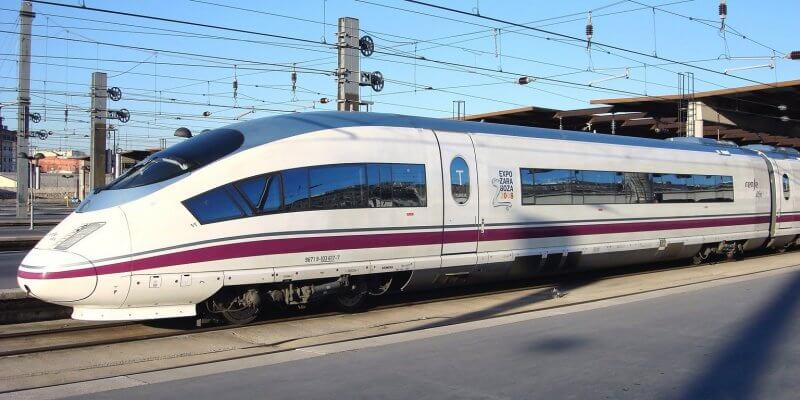
The second option is by bus. The most popular carrier in this direction is Alsa. Buses run 4-5 times a day, and the travel time is one hour. The ticket price is from 5 to 20 euros. The bus departs from the Valencia bus station and arrives at the Gandia Central bus station.
From Alicante
There are no railway lines between the cities of Alicante and Gandia, so the only option is to take a bus. You can board an Alsa bus at the Alicante bus station and travel to the Benidorm station. There, you will need to transfer to another Alsa bus that will take you to the Gandia station.
Total travel time – 1 hour 30 minutes. Cost – 10 euros + 8 euros.
To stay informed about changes in the schedule, you should regularly visit the website of the Alsa bus company: www.alsa.com]
Useful tips
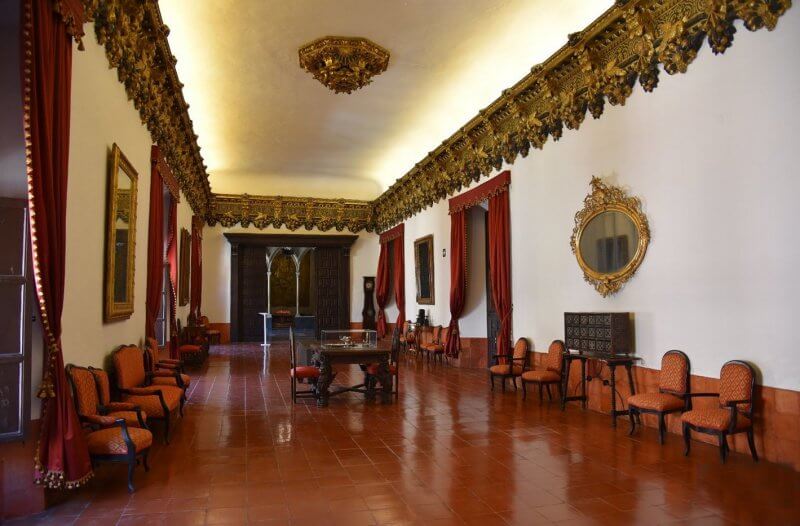
- Be sure to visit the Upper Terrace of the Borgia Palace – it’s very beautiful.
- It is better to purchase tickets to the Borgia Palace online.
- In Gandia, as in many other cities in Spain, there are regular celebrations and festivals. The most popular is the Day of Saint Francis, the patron saint of the city. The celebration begins in the first week of October and includes performances by street artists and reenactments of medieval times.
- Another holiday is Holy Week, which begins at the end of March. Hundreds of papier-mâché figures “go out” on the street, and musicians play traditional music.
Gandia, Spain, is a resort on the Mediterranean coast that is perfect for a relaxing family vacation.

